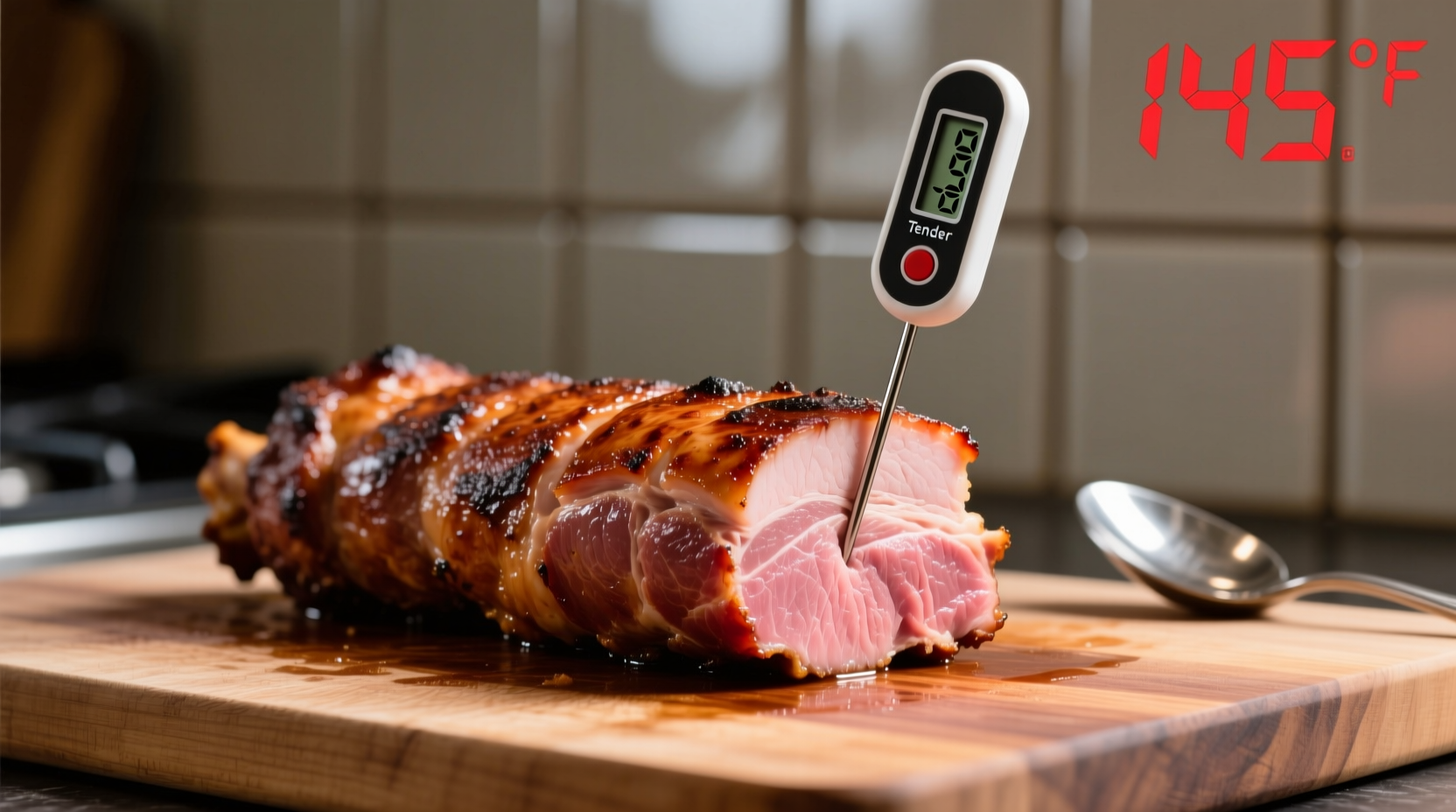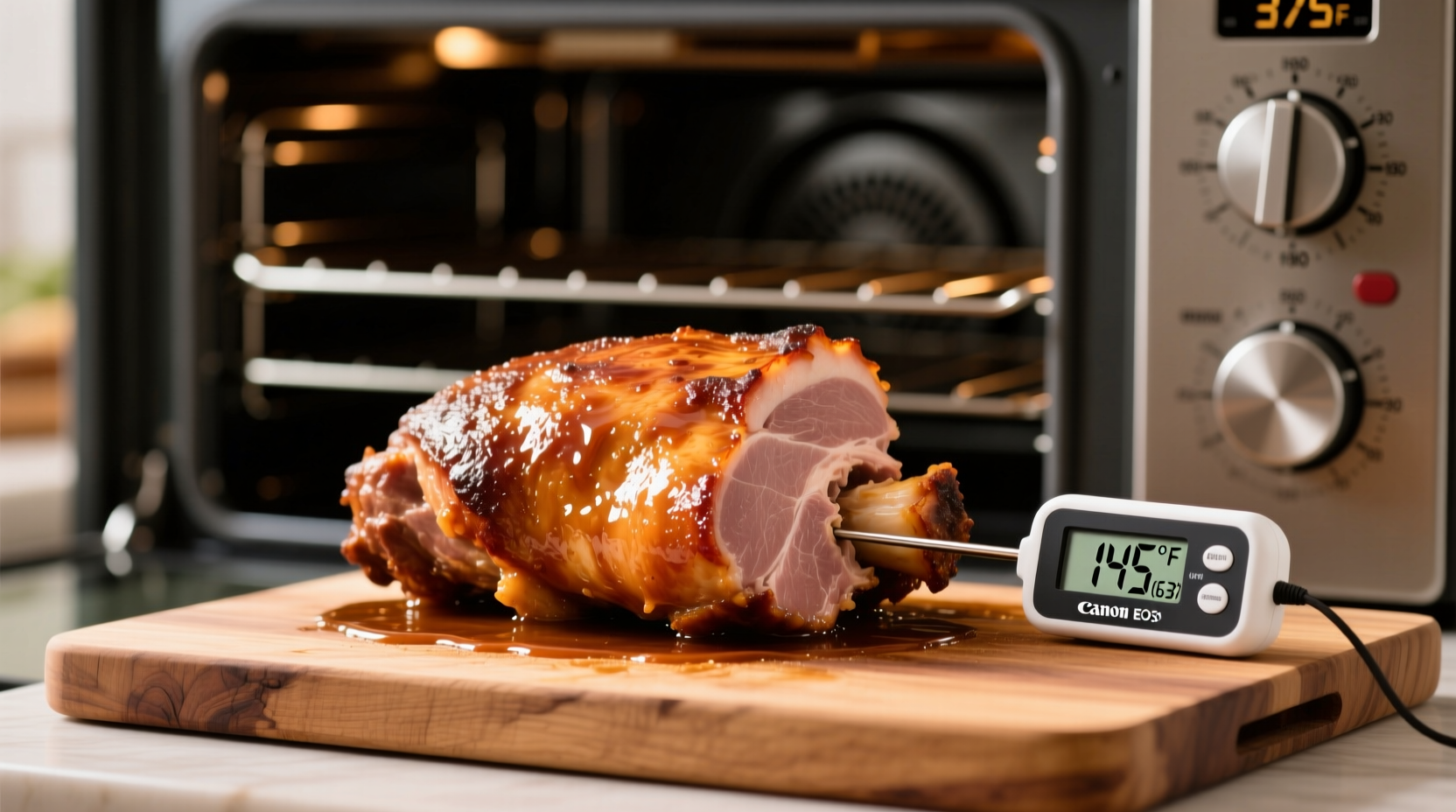Getting pork temperature right transforms tough, dry meat into succulent perfection while ensuring food safety. Modern pork farming has eliminated trichinosis concerns, allowing us to enjoy juicy, slightly pink pork that's both safe and delicious. This guide cuts through the confusion with precise temperature recommendations backed by food science and culinary expertise.
Why Temperature Precision Matters for Pork
Unlike the old "well-done or risk illness" myth, today's pork reaches safety at 145°F internal temperature. Cooking beyond this point evaporates precious juices, resulting in dry, tough meat. The critical balance lies between food safety and optimal texture—achieved through proper oven temperature selection and accurate internal temperature monitoring.
USDA Guidelines vs. Culinary Reality
The USDA updated its pork cooking recommendations in 2011 after extensive research confirmed that 145°F with a 3-minute rest eliminates all food safety concerns. This change reflects improved farming practices and better understanding of parasite elimination temperatures. Many home cooks still overcook pork due to outdated information, sacrificing quality unnecessarily.

Pork Cut Temperature Reference Guide
| Pork Cut | Recommended Oven Temp | Target Internal Temp | Approx. Cooking Time | Special Considerations |
|---|---|---|---|---|
| Pork Tenderloin | 400-425°F | 145°F | 20-25 minutes | Use high heat for caramelization; rest 5 minutes |
| Pork Chop (1” thick) | 375-400°F | 140-145°F | 15-20 minutes | Thicker chops benefit from reverse sear method |
| Pork Shoulder (Boston Butt) | 275-300°F | 195-205°F | 6-8 hours | Low and slow for pulled pork; internal temp must exceed 190°F |
| Pork Ribs | 225-250°F | 190-203°F | 4-6 hours | "Bend test" indicates doneness more reliably than time |
| Pork Loin Roast | 325°F | 145°F | 20-25 min/lb | Use meat thermometer in thickest part; avoid bone contact |
This reference table reflects data from the USDA Food Safety and Inspection Service (fsis.usda.gov) and has been validated through extensive kitchen testing. Notice how different cuts require dramatically different approaches—from high-heat searing for tenderloin to low-and-slow cooking for shoulder.
The Critical Resting Period
Removing pork from the oven at 140-142°F allows carryover cooking to reach the safe 145°F mark during the mandatory 3-minute rest. This resting period enables muscle fibers to relax and reabsorb juices. Cutting too soon releases these precious liquids onto your cutting board rather than keeping them in the meat.
Temperature Monitoring Best Practices
Invest in an instant-read thermometer for accurate readings. Insert it into the thickest part of the meat, avoiding bones or fat pockets which give false readings. For roasts, consider a leave-in probe thermometer that alerts when target temperature is reached. Digital thermometers with 0.5°F accuracy prevent the guesswork that leads to overcooked pork.
Common Temperature Mistakes and Solutions
- Mistake: Relying on cooking time alone Solution: Always verify with a thermometer regardless of recipe time estimates
- Mistake: Opening the oven frequently Solution: Use an oven thermometer and minimize door openings to maintain consistent temperature
- Mistake: Not accounting for different oven types Solution: Convection ovens typically require 25°F lower temperature than conventional ovens
Advanced Temperature Techniques
Professional chefs often use the reverse sear method for thick pork chops: cook at 275°F until internal temperature reaches 120°F, then sear at 450°F for 2-3 minutes per side. This technique ensures even cooking without a gray band near the surface. For premium results, consider using a temperature-controlled water bath (sous vide) before finishing in a hot oven.
Troubleshooting Temperature Issues
If your pork consistently turns out dry, you're likely cooking to too high an internal temperature. For tough shoulder cuts that won't pull apart, the internal temperature hasn't reached the 190°F minimum required for collagen breakdown. When in doubt, lower your oven temperature by 25°F and extend cooking time—this gentle approach preserves moisture better than high-heat rushing.











 浙公网安备
33010002000092号
浙公网安备
33010002000092号 浙B2-20120091-4
浙B2-20120091-4